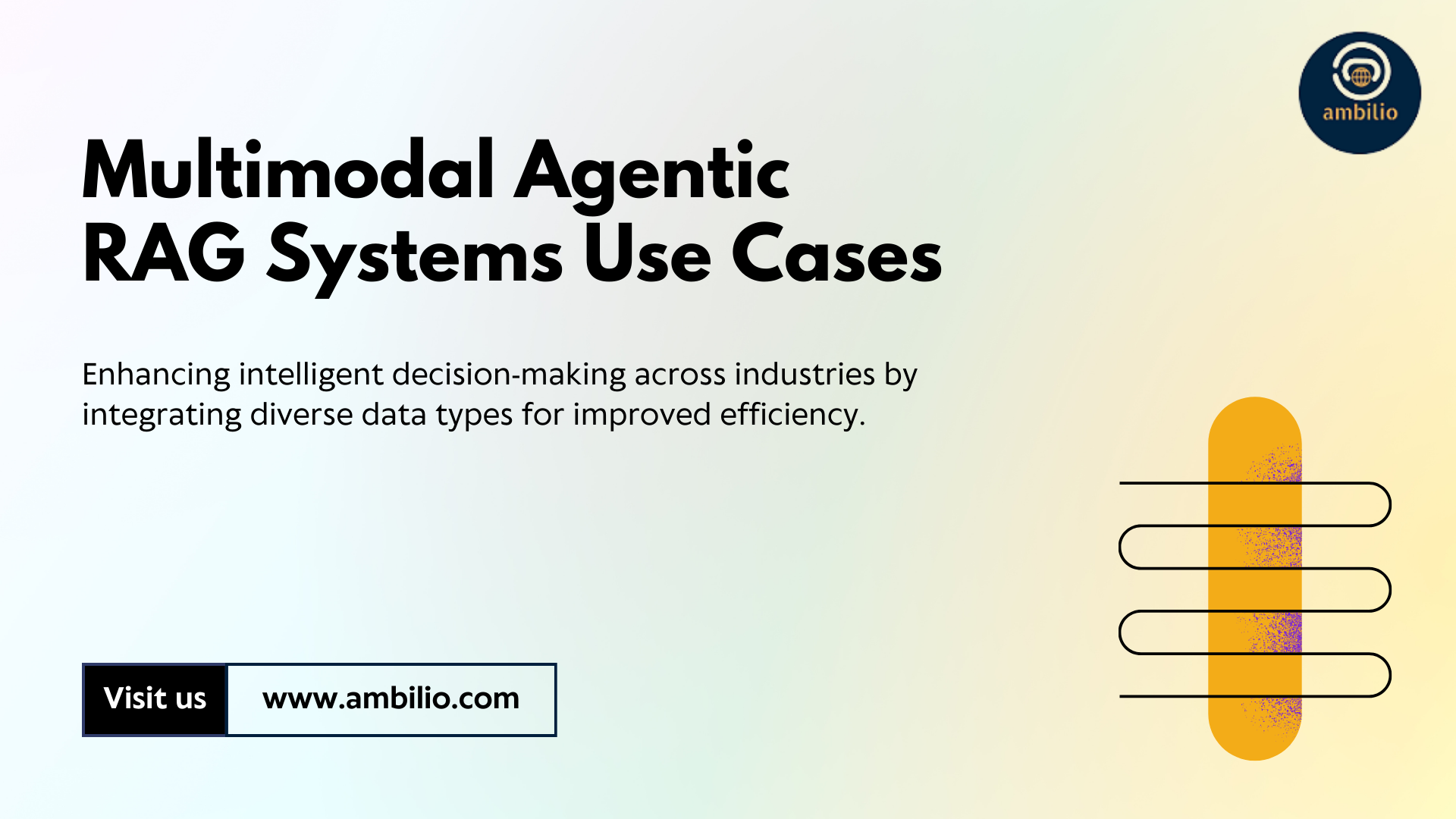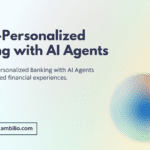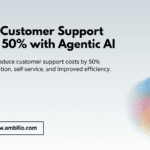As artificial intelligence (AI) continues to evolve, new frameworks are emerging to address complex challenges that traditional AI systems have struggled with. One such framework is Multimodal Agentic Retrieval-Augmented Generation (RAG), a next-generation system designed to integrate multiple data types (e.g., text, images, audio, and video) and enhance data retrieval and decision-making processes. This article delves into the workings of multimodal agentic RAG systems, their key benefits, and how they are transforming industries such as healthcare, finance, customer support, and e-commerce.
What is Multimodal Agentic RAG?
Multimodal Agentic RAG is an advanced AI system that combines the strengths of traditional RAG with the added power of intelligent agents. It is designed to process multiple data modalities simultaneously, such as text, images, audio, and video, enabling it to generate richer and more context-aware responses. Traditional RAG systems are primarily text-based, retrieving information from large databases or documents and using that information to generate outputs. However, this can be limiting in industries that require an understanding of complex, multimodal data.
The agentic aspect of multimodal RAG refers to the use of intelligent agents. These agents not only retrieve information but also carry out complex reasoning, handle dynamic queries, and manage intricate tasks with minimal human intervention. They enable the system to make real-time decisions, adapt strategies, and work collaboratively to solve complex problems.
How Does Multimodal Agentic RAG Work?
At its core, multimodal agentic RAG operates through a network of specialized AI agents that process and analyze diverse data sources. These agents are responsible for various tasks, including:
- Data Integration: Multimodal RAG can handle different types of data (text, images, audio, and video) by integrating them into a unified framework. The system can pull relevant information from various sources, such as medical records, financial reports, images, and videos, and combine them to generate a comprehensive response.
- Reasoning and Contextual Understanding: The agents are capable of sophisticated reasoning. For example, they can evaluate user queries in context and prioritize which data sources to use based on the nature of the inquiry. If a query requires analyzing both text and image data, the agents can reason through these modalities, synthesizing them into a single, actionable output.
- Dynamic Planning and Execution: Multimodal agentic RAG systems can adapt their strategies and execution plans in real-time. For example, if the initial data retrieval does not yield sufficient information, the system can pivot and access additional tools or external data sources.
- Collaborative Agent Network: The system employs multiple agents working in tandem, each handling specific tasks. Some agents may specialize in processing textual information, while others may handle images or audio, thus streamlining the overall workflow and improving efficiency.
- External Tool Integration: These systems can integrate with a variety of external tools such as web searches, vector search engines, calculators, and APIs to gather diverse data types, enhancing their response generation capabilities.
Key Benefits of Multimodal Agentic RAG
Multimodal Agentic RAG systems offer several key advantages that make them highly beneficial across various sectors:
- Enhanced Decision-Making: By combining multiple data modalities, these systems provide richer and more comprehensive insights, improving decision-making across industries.
- Increased Efficiency: With intelligent agents handling dynamic queries and performing real-time reasoning, the system is more efficient than traditional AI frameworks, allowing for faster and more accurate responses.
- Contextual Awareness: The ability to process and integrate data from various sources allows the system to generate more contextually relevant outputs, ensuring that the information provided is tailored to the user’s needs.
- Automation and Scalability: Multimodal agentic RAG systems can automate complex tasks and processes, reducing the need for manual intervention and enabling scalability for large operations.
- Quality Control: With intelligent agents monitoring data quality and verifying information, these systems help eliminate errors such as “AI hallucinations” (where the AI generates inaccurate or irrelevant information).
Applications Across Industries
1. Healthcare
In the healthcare industry, multimodal agentic RAG systems are revolutionizing how medical professionals approach diagnosis and treatment. These systems can integrate patient records, medical imaging data (e.g., X-rays, MRIs), and even audio reports from doctors to assist in making more accurate diagnoses. For instance, if a doctor is evaluating a potential heart condition, the system might combine textual patient history with ECG data and medical imaging to generate a more informed recommendation.
These systems also enhance personalized care by providing healthcare professionals with relevant, multimodal insights, which allows for customized treatment plans. Moreover, by automating the data retrieval and analysis processes, healthcare providers can improve operational efficiency and reduce human error.
2. Financial Services
In the financial sector, multimodal agentic RAG systems can process a vast array of data, including stock market trends, financial reports, news articles, and even audio feeds from analysts. By synthesizing this data, these systems can provide financial analysts with real-time insights and predictions, helping them make more informed investment decisions.
For example, if an analyst is assessing a particular stock, the system can pull relevant financial reports, stock price history, and news headlines that may affect the company’s market value. It can also analyze social media sentiment and audio interviews with executives to offer a comprehensive view of the company’s health.
3. Customer Support
Customer support platforms are another area where multimodal agentic RAG systems can significantly enhance service quality. These systems can process and respond to customer queries that involve text, images, and even voice messages. For instance, a customer might send a picture of a defective product, describe the issue in text, and leave a voice message for clarification. The system can integrate all these modalities to generate a solution that addresses the customer’s concerns accurately and swiftly.
By integrating with CRM systems and accessing relevant product information, these systems can automate the resolution of common inquiries, leading to reduced wait times and improved customer satisfaction.
4. E-Commerce
In e-commerce, multimodal agentic RAG systems can enhance the shopping experience by providing personalized recommendations based on various data types. These systems can analyze customer preferences (text-based reviews), product images, and even videos from user-generated content to recommend products that fit a customer’s needs. Additionally, these systems can help in inventory management by integrating sales data, supply chain logistics, and product visuals to optimize stock levels and predict demand trends.
5. E-Learning and Education
Educational institutions can use multimodal agentic RAG systems to create interactive and personalized learning experiences. By integrating text-based resources, videos, quizzes, and even real-time discussions, these systems can deliver tailored learning paths based on individual student needs. They can analyze a student’s past performance, adapt learning materials, and provide dynamic feedback that enhances engagement and knowledge retention.
Final Words
Multimodal Agentic RAG systems represent a significant advancement in AI, offering unparalleled capabilities to integrate and process multiple types of data simultaneously. Their ability to dynamically adapt, reason contextually, and collaborate across specialized agents allows them to deliver comprehensive, accurate, and real-time insights. Across industries like healthcare, finance, customer support, e-commerce, and education, multimodal agentic RAG is driving enhanced decision-making, operational efficiency, and customer satisfaction. As these systems continue to evolve, their potential to transform industries and improve human-computer interactions will only increase.



